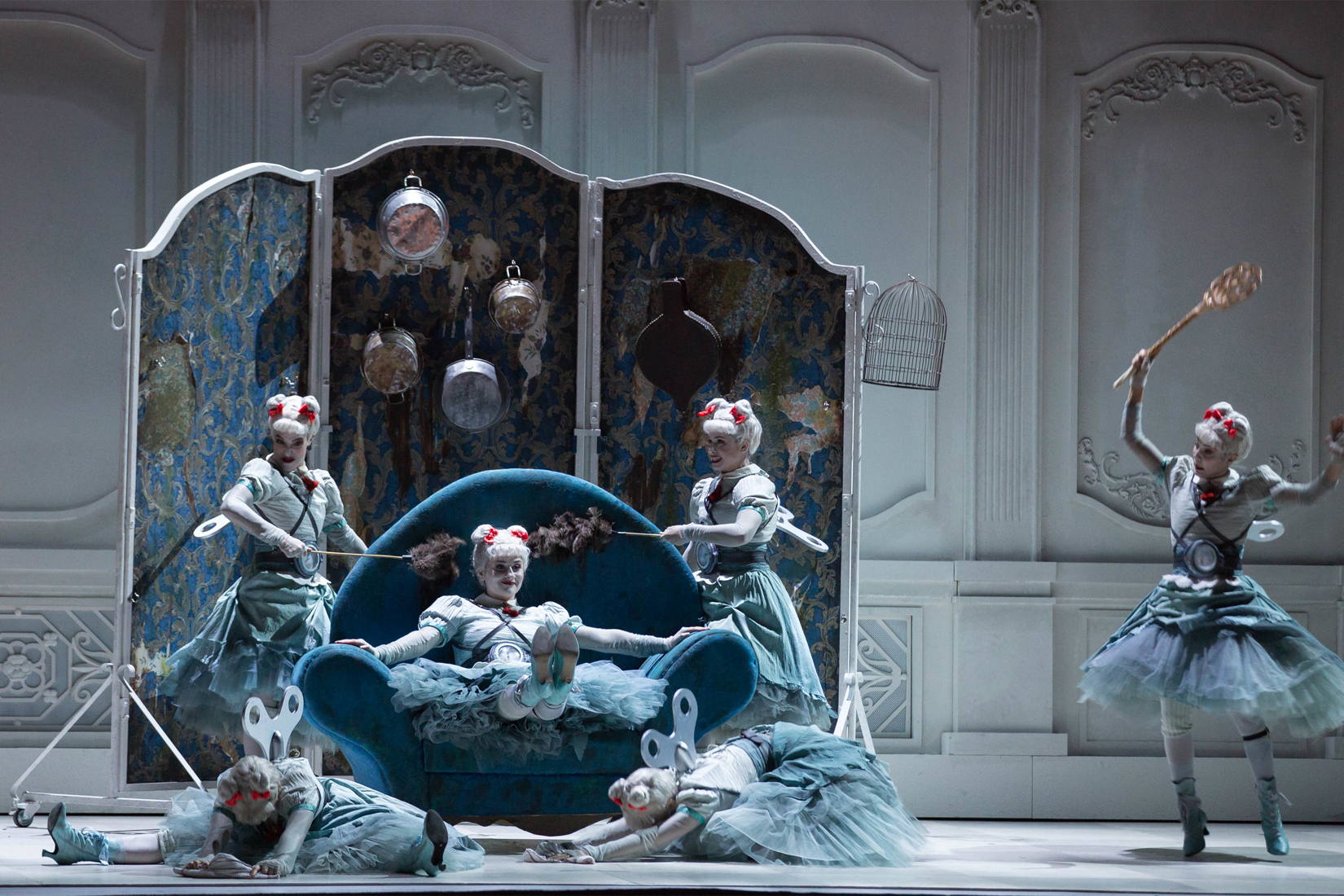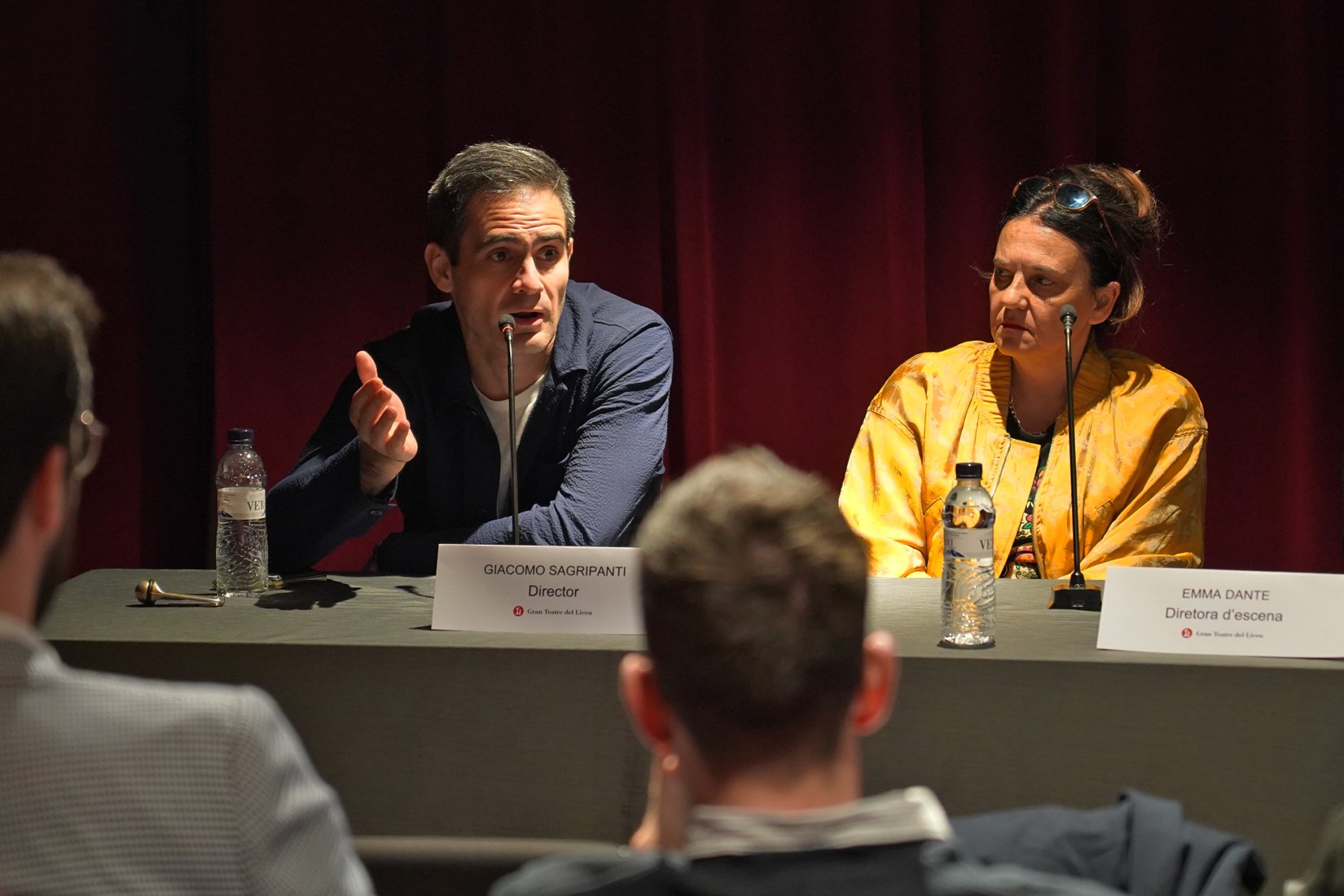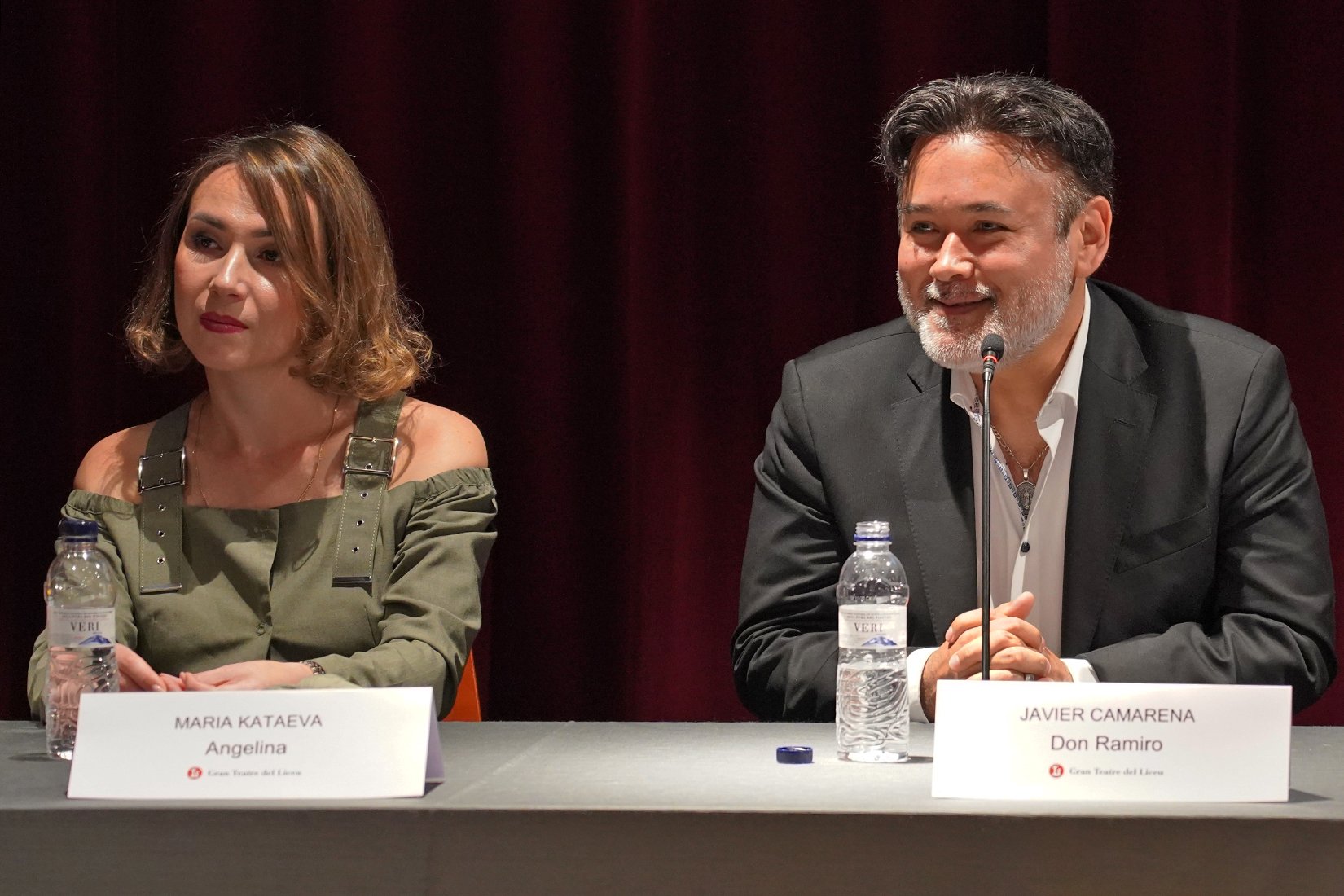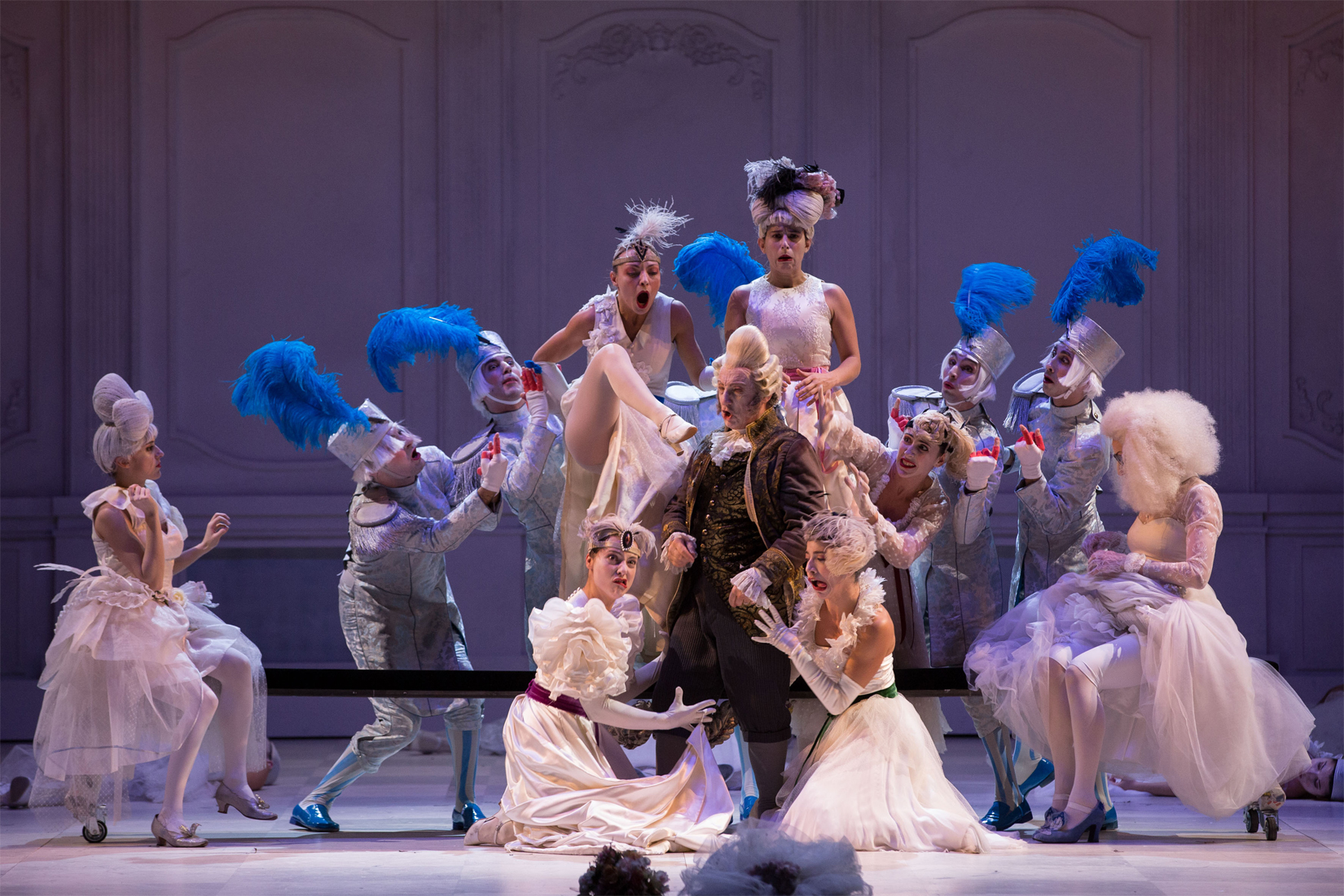
Premiered in Rome in 1817, La cenerentola —an adaptation of Charles Perrault's tale Cinderella— is Rossini's last great comic opera, returning to the Liceu from May 16 to June 1.
Emma Dante presents a very broad interpretation of the opera, which is a comedy in the best Rossinian tradition, but also addresses situations typical of semi-serious opera, that is, those in which dramatic situations occur that add gravity to the story, not just humor, nonsense, and fun. After all, Angelina's presentation in the first act is more depressing than comic: while her stepsisters exhibit ridiculous vanity, she receives humiliating treatment from her family.
And it is this circumstance that Dante uses to develop the scenic setting, which she constructs with the idea of complementing the comedy with moments of denunciation that touch on aspects such as harassment and gender violence. For example, at the end of the opera, before the curtain falls, and as we celebrate Angelina's fortune —she will marry Prince Don Ramiro—, the stepsisters, Tisbe and Clorinda, choose to commit suicide on stage, receiving a very harsh punishment for their selfish and cruel behavior throughout the opera.

If morality indicates that evil has a punishment, the sisters receive the maximum penalty. On the other hand, La cenerentola is a fairy tale. In Rossini's opera, there is no magic, but all the enchantment and surprise of Perrault's story is maintained, as what is improbable comes true —the triumph of the marginalized girl— through imagination and kindness. And Dante does not skimp on fantasy, turning the production into an experience close to pop surrealism.
The two acts of the opera unfold in a single space: a hall with mirrors that occupies the entire stage —with side and rear entrances, allowing for constant circulation of characters—, which serves as the setting for Don Magnifico's house and the prince's palace. The costumes are period —a regression to Rossini's times—, but the dramaturgy is modern, a contrast between what is classic and what is daring, resulting, as Dante says, in surrealism and pop. And the constant participation of a ballet is of great importance in this.

In this production, each action of the characters on stage is accompanied by complementary movements of a group of extras and dancers, who not only help intensify the comic effect —with all the speed and chaos characteristic of Rossini's buffa operas—, but also offer a reading of the internal psychology of each role, as what they think and feel is as important as what they do and say, through a frenzied music.
Thus, the emotional journey of Angelina can be followed, from the depression caused by being a victim of bullying, to the final relief thanks to the love of the prince, which she achieves not by caprice of the man, but by her tenacity and intelligence: needless to say, this kind and insightful Angelina also embodies an emancipatory feminist nuance.

La cenerentola, premiered in Rome in January 1817, is a milestone in Rossini's career, as it stands at a midpoint between his dazzling debut in 1810 and his premature retirement in 1829. But it is also important for another reason: it was his last great comic opera, composed after Il Barbiere di Siviglia —thus, a sign of the grace period Rossini was going through— before definitively deciding to work on a more dramatic type of opera.
Rossini was the star of European music, and his premieres were counted as triumphs, and he came to La cenerentola by accident: Ferretti had adapted a libretto from two previous texts —which had been turned into successful operas composed by Nicolas Isouard and Stefano Pavesi—, and presented an impeccable comedy that only lacked music. In the materials he drew inspiration from, references to the supernatural in Perrault's tale had already been smoothed out, because they were products of the enlightened Europe, which placed faith in reason and common sense, and rejected superstition.

Moreover, Ferretti even anticipated the Vatican's censorship by eliminating not only the superstitions, but also the glass slippers, since he knew that showing a female foot in Rome —or even an ankle— would have been inadmissible in papal opera. This was the material Rossini received: accustomed to working at a fixed price, he finished the score in a few weeks, and La cenerentola was ready to be premiered.
The first night was not a resounding success, but it did conquer all of Europe a few months later. Rossini's operas, and especially his masterful buffa works of the 1810s —L'italiana in Algeri, Il turco in Italia, Il Barbiere di Siviglia and, of course, La cenerentola— have a common characteristic: they require very agile performers, capable of singing with precision and clarity at demoniac speeds.
Not only that: they must also have, at the same time, a highly developed comic sense and convey with gestures and good acting skills the richness of humorous nuances expressed by the characters.

This implies that, in this opera in particular, and in this production in particular, the performers must be able to balance comedy with dramatic moments, and live up to Rossini's devilish score, which contains difficult arias, very long ensemble numbers, and all the pyrotechnics that made him rich and famous.
In these performances, the main attraction lies in the character of Don Ramiro, played by two of the most important light and lyric tenors of the moment, the Mexican Javier Camarena —the great reference of Rossinian comedy and bel canto in recent years— and an emerging star, the South African Sunnyboy Dladla, who achieved great success at the last Rossini festival in the city of Pesaro.
The serious roles are for the baritones Florian Sempey and Carles Pachon, in the role of the servant Dandini, and for the bass-baritones Erwin Schrott —who returns to the Liceu after his participation in Macbeth— and Marko Mimica in the role of Alidoro. Don Magnifico, a bass role —and, in a way, the most prominent in the opera for the number of his arias—, is defended by two experts in comic bel canto, Paolo Bordogna and Pablo Ruiz.

In the female roles, the stepsisters Clorinda and Tisbe fall, respectively, to the Catalan soprano Isabella Gaudí and the Belarusian mezzo Marina Pinchuk. And, finally, the true main character of the work, Angelina/Cenerentola, written for a mezzo-soprano with great coloratura ability, is played by the Russian Maria Kataeva and the Barcelonian Carol García.
The musical direction is entrusted to Giacomo Sagripanti, a young and energetic conductor characterized by a deep knowledge of Rossini and bel canto in general, and for printing very vigorous tempos on the works that force the singers to give their best.
With the collaboration of:


